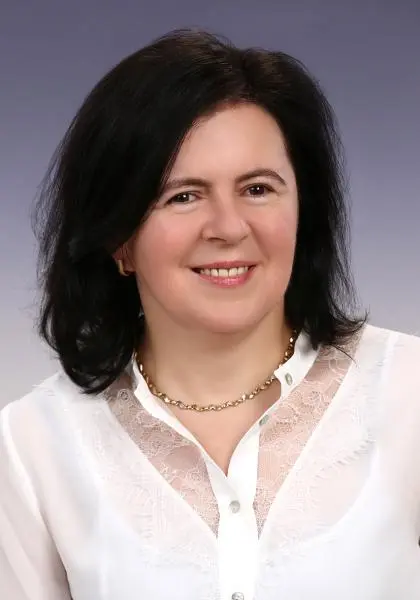 |
Head of the group email: |
|---|
Members of the group:
Nimrah Ghaffar, Ph.D student
Zsuzsanna Ritter, Ph.D student
Kuljeet Singh, Ph.D student
Adél Vezendiné Nagy, laboratory assistant
Nazerke Amankossova, undergraduate student
Dzilafho Netshitungulu, undergraduate student
Former members of the group:
Gábor Szalóki, Ph.D
Orsolya Bársony, Ph.D
Szabolcs Tarapcsák, Ph.D
Zsuzsanna Gyöngy, Ph.D student
Annamária Téglási, diploma student, technician
Beatrix Ágics, diploma student
Zsanett Bukó, diploma student
Szabó Brigitta, diploma student
Theoretical background:
ABC proteins form one of the largest protein families and are present in every organism from bacteria to human. The majority of the 48 human ABC proteins are active pumps utilizing the energy of ATP hydrolysis for exporting various compounds out of cells. Certain ABC transporters including ABCB1 (P-glycoprotein) and ABCG2 have extremely broad substrate spectra involving xenobiotics, endobiotics and numerous chemotherapeutic compounds applied in the treatment of various diseases (e.g., antibiotics, reverse transcriptase inhibitors, antidepressants, narcotics and antineoplastic drugs). Since ABCB1 and ABCG2 are expressed in tissue barriers including the intestinal epithelium, blood-brain, blood-placenta and blood-testis barriers as well as in drug metabolizing and drug excreting organs (e.g., liver and kidney), they are important determinants of the pharmacokinetics of the above-mentioned chemotherapeutic compounds. In addition, ABCB1 and ABCG2 are often overexpressed in tumour cells as well as in tumour stem cells, and therefore they are key players of the chemotherapy resistance of tumours. In view of their great physiological and medical importance, ABC transporters are important targets for pharmacological modulations. Therefore, the detailed understanding of the working mechanism of ABC proteins can promote rational drug design. On the other hand, the identification of drugs that can interact with ABCB1 or ABCG2 as substrates/inhibitors may help to avoid the emergence of drug-drug interactions upon chemotherapy of various diseases.
Methodology:
To gain deeper insight into the working mechanism of ABCB1 and ABCG2, we introduce point mutations into structurally and/or functionally important parts of the proteins and study their effects on the function and conformational changes of the proteins. The functional activity of the mutant transporter variants is studied in substrate accumulation and efflux assays using fluorescent substrates as well as in ATPase activity measurements. The conformational changes of the transporters are studied by conformation sensitive antibodies, while the substrate affinity of the different conformers is monitored in confocal microscopic fluorescence co-localization assays and by fluorescence correlation spectroscopy (FCS).
Research Projects
- Studying the functional and conformational coupling between the two nucleotide binding sites and the two transmembrane domains of ABCB1
- Studying the catalytic cycle of ABCG2
- Elucidating the molecular mechanism of polyspecific drug binding in ABCB1 and ABCG2
Representative publications:
- Goda, K., Bacsó, Z., Szabó, G.: Multidrug resistance through the spectacle of P-glycoprotein. Curr. Cancer Drug Targets 9 (3), 281-297., 2009. IF: 5.129, Rank: Q1/D1
- Goda, K., Fenyvesi, F., Bacsó, Z., Nagy, H., Márián, T., Megyeri, A., Krasznai, Z., Juhász, I., Vecsernyés, M., Szabó, G.: Complete inhibition of P-glycoprotein by simultaneous treatment with a distinct class of modulators and the UIC2 monoclonal antibody. J. Pharmacol. Exp. Ther 320 (1), 81-88., 2007. IF: 4.003, Rank: Q1
- Nagy, H., Goda, K., Fenyvesi, F., Bacsó, Z., Szilasi, M., Kappelmayer, J., Lustyik, G., Cianfriglia, M., Szabó, G.: Distinct groups of multidrug resistance modulating agents are distinguished by competition of P-glycoprotein-specific antibodies. Biochem. Biophys. Res. Commun 315 (4), 942-949., 2004. IF: 2.904, Rank: Q1/D1
- Goda, K., Nagy, H., Mechetner, E., Cianfriglia, M., Szabó, G.: Effects of ATP depletion and phosphate analogues on P-glycoprotein conformation in live cells. Eur. J. Biochem 269 (11), 2672-2677., 2002. IF: 2.999, Rank: Q1
Recent publications:
- Goda, K., Dönmez-Cakil, Y., Tarapcsák, S., Szalóki, G., Szöllősi, D., Parveen, Z., Türk, D., Szakács, G., Chiba, P., Stockner, T.: Human ABCB1 with an ABCB11-like degenerate nucleotide binding site maintains transport activity by avoiding nucleotide occlusion. PLoS Genet. 16 (10), 1-21, 2020. IF: 5.917, Rank: D1
- Tarapcsák, S., Szalóki, G., Telbisz, Á., Gyöngy, Z., Matúz, K., Csősz, É., Nagy P., Holb, IJ, Rühl, R., Nagy, L., Szabó, G., Goda, K.: Interactions of retinoids with the ABC transporters P-glycoprotein and Breast Cancer Resistance Protein. Sci. Rep. 7, 41376., 2017. IF: 4.122, Rank: D1
- Bársony, O., Szalóki, G., Türk, D., Tarapcsák, S., Gutay-Tóth, Z., Bacsó, Z., Holb, I., Székvölgyi, L., Szabó, G., Csanády, L., Szakács, G., Goda, K.: A single active catalytic site is sufficient to promote transport in P-glycoprotein. Sci. Rep 6 (24810), 1-16., 2016. IF: 4.259, Rank: D1
- Trencsényi, G., Kertész, I., Krasznai, Z., Máté, G., Szalóki, G., Péli-Szabó, J., Kárpáti, L., Krasznai, Z., Márián, T., Goda, K.: 2' [ 18F]-fluoroethylrhodamine B is a promising radiotracer to measure P-glycoprotein function. Eur. J. Pharm. Sci 74 27-35., 2015. Rank: IF: 3.773, D1
- Szalóki, G., Krasznai, Z., Tóth, Á., Vízkeleti, L., Szöllősi, A., Trencsényi, G., Lajtos, I., Juhász, I., Krasznai, Z., Márián, T., Balázs, M., Szabó, G., Goda, K.: The strong in vivo anti-tumor effect of the UIC2 monoclonal antibody is the combined result of Pgp inhibition and antibody dependent cell-mediated cytotoxicity. PloS ONE 9 (9), 1-9., 2014. IF: 3.234, Rank: D1